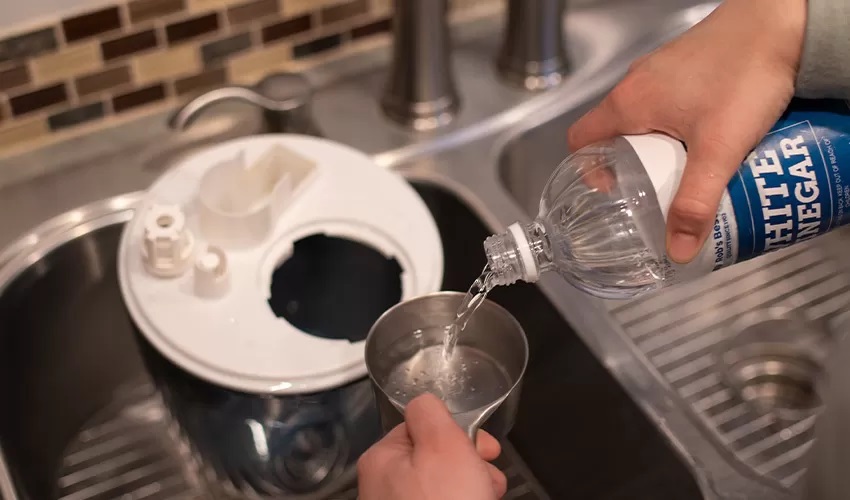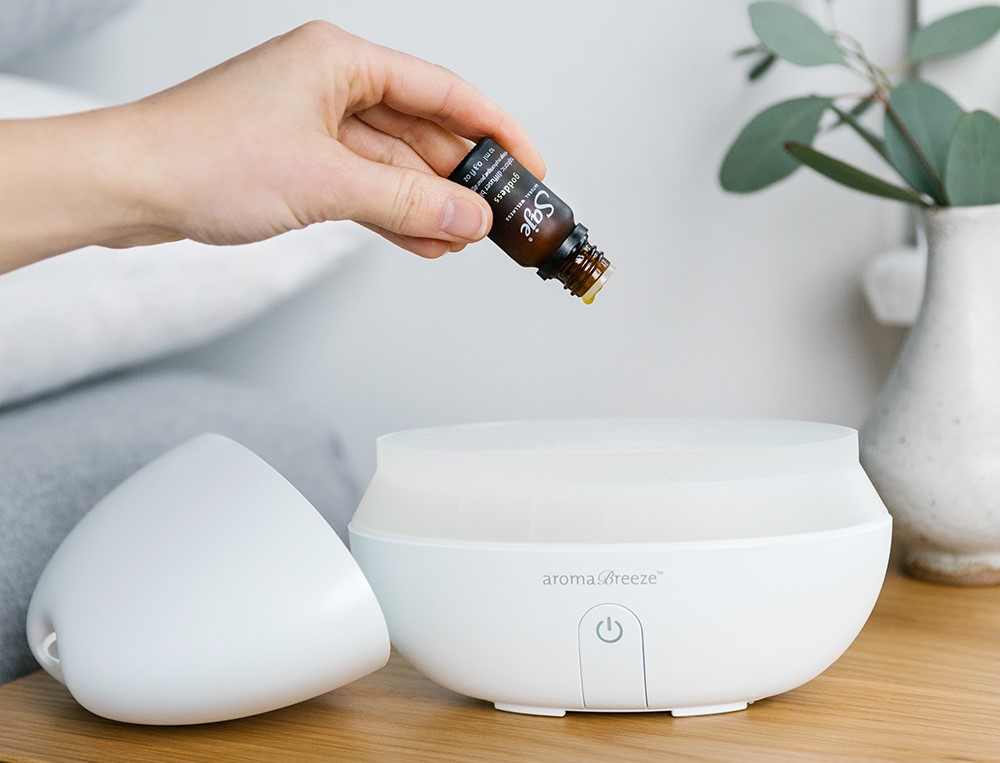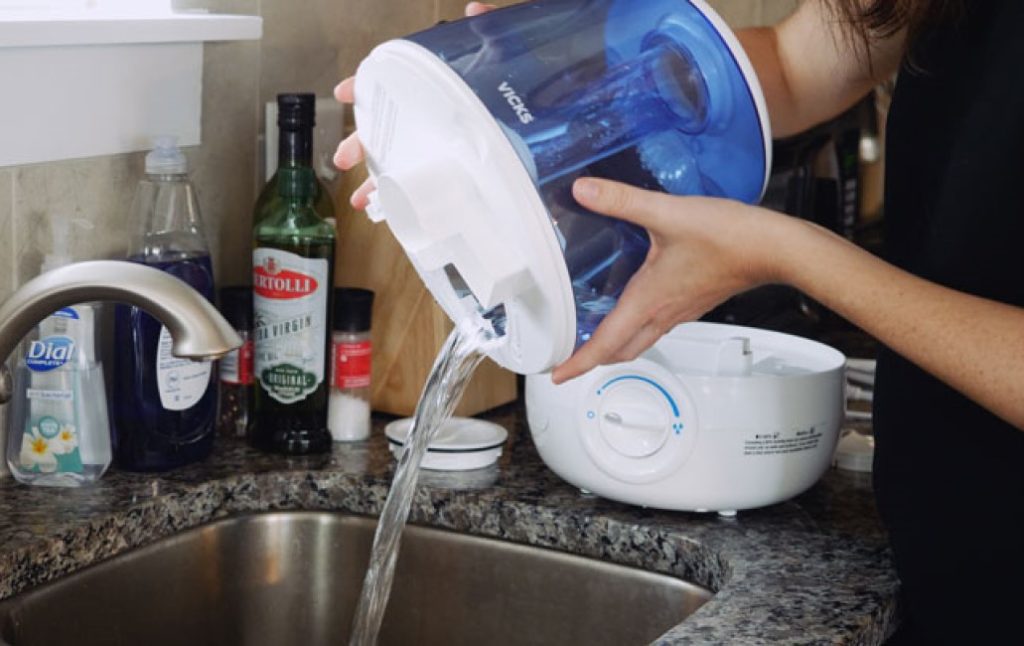

If you live in an area that experiences winter, then you know the essence of owning a humidifier. It is a useful device that keeps the air moist when humidity levels tank. It is also a proven solution to various cold-related illnesses like the common cold, asthma, and other respiratory problems. However, it can be harmful to your health when its performance gets impeded by some occurrences like mold.
A humidifier is an ideal breeding ground for mold because mold thrives in wet, enclosed environments. If not cleaned properly and maintained, mold can grow in your humidifier and get spread into the air together with the mist. This can lead to severe nasal infections and other deadly illnesses like the humidifier lung Trusted Source HUMIDIFIER LUNG: CHARACTERIZATION OF FEATURES AND COMPARISON TO OTHER HYPERSENSITIVITY PNEUMONITIS PHENOTYPES - Wiley Online Library Humidifier lung (HL) is a relatively rare form of hypersensitivity pneumonitis (HPs) associated with the inhalation of moisture from humidifiers contaminated by various organisms. Because many of the past studies were case reports, clinical characteristics of HL have not been well described. The aim of this study is to characterize HL and compare this phenotype with other forms of HPs. onlinelibrary.wiley.com . Therefore, it is important to know what to put in your humidifier to prevent mold after thorough cleaning and maintenance.
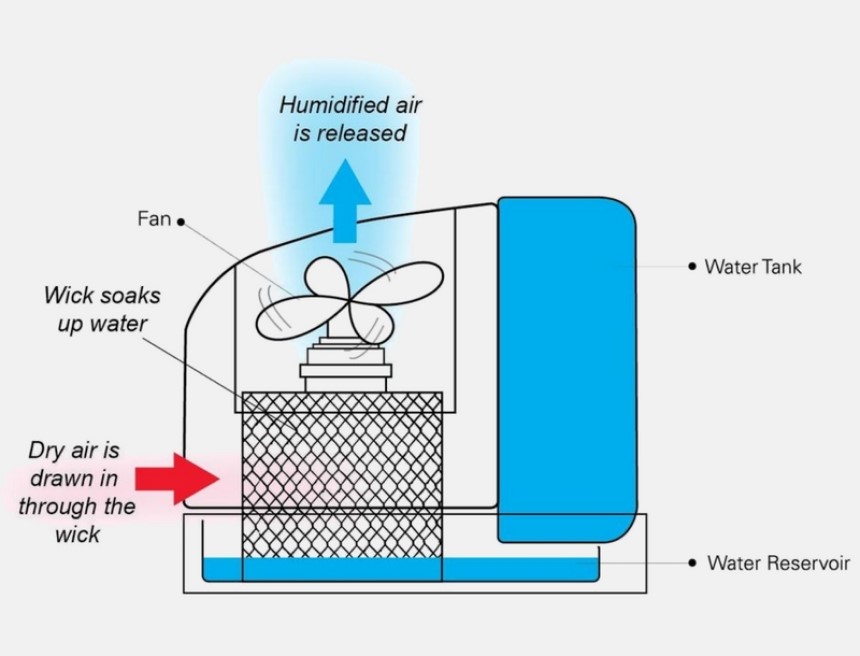
Humidifiers work in different ways; the central humidifiers are meant to humidify the entire house and are therefore built into home AC and heating systems.
Ultrasonic humidifiers produce a cool mist with ultra-sonic vibration. They feature a metal diaphragm that vibrates at an ultra-sonic frequency to create water droplets. Ultrasonic humidifiers are usually silent. Therefore, if you can’t take any more noise from a device in your home, this should be your go-to humidifier.
Impeller humidifiers feature a rotating disk that produces a cool mist. The rotating disc hurls water at a comb-like diffuser, which then breaks the water into tiny little droplets that float in the air. The droplets will appear as a cool fog leaving the humidifier. Majority of the best cool mist humidifiers on the market are impeller humidifiers.
Evaporators use a fan to blow air through a filter, belt, or wet wick. They feature a reservoir that holds cold water and dispenses into a basin. The water from the basin is then absorbed by a wicking filter. When the filter is fully moistened, a fan blows air through it. Most evaporative humidifiers are usually self-regulating. The AIRCARE MA1201 Whole-House Console-Style Evaporative Humidifier is the most popular evaporative humidifier. Top reviewers claim that it is a powerful gem that can be used to humidify an entire house. It boasts an enormous water tanks and has 4 fan settings for added convenience and versatility.
Steam vaporizers use electricity to boil water and create warm steam. It is the simplest and least expensive technology. Since it releases warm steam into the air, you can use a medical inhalant with it to relieve some respiratory illnesses like coughs.
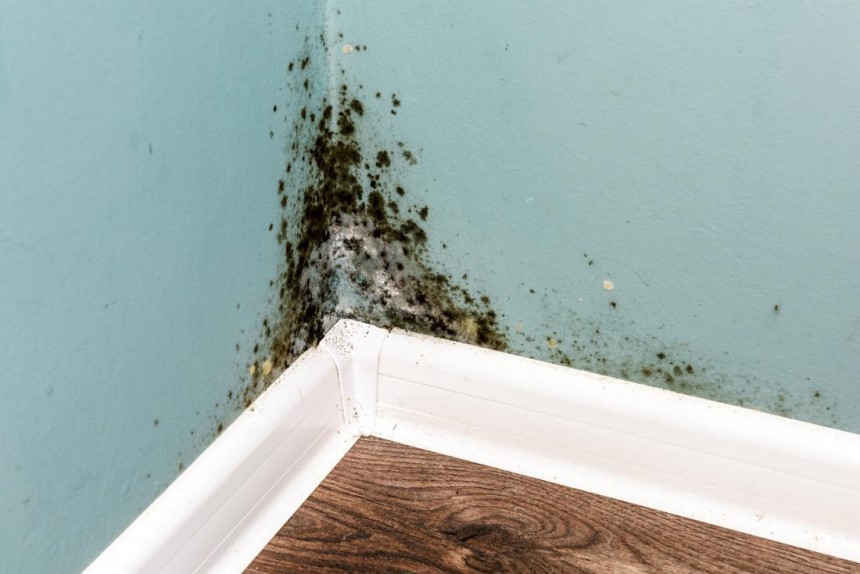
There are different types of molds, and all of them only need a nutrient source and moisture to thrive.
Since a humidifier is basically an enclosed tank with water, it is the perfect environment for indoor mold Trusted Source Indoor mold - Wikipedia Because common building materials are capable of sustaining mold growth and mold spores are ubiquitous, mold growth in an indoor environment is typically related to water or moisture exposure and may be caused by incomplete drying of flooring materials (such as concrete). Flooding, leaky roofs, building-maintenance or indoor-plumbing problems can lead to interior mold growth. en.wikipedia.org to grow. The motor’s heat provides the ambient temperature, and the fabric or foam filter in the humidifier makes for a perfect depository surface.
Molds are unsightly, ghastly, and creepy, but they can be prevented and destroyed. Here are some pro tips on humidifier mold prevention.
Following the proper cleaning procedure will keep your humidifier free from mold and bacteria. Follow these simple cleaning steps to prevent or get rid of mold in your humidifier. The cleaning steps apply to all types of humidifiers.
Step 1. Empty your humidifier’s tank and take it outside or any large space with great ventilation. Gather everything you need, then ut on rubber gloves to protect your hands.
Step 2. Dip a cleaning sponge, brush, or scrubber into a 3% hydrogen peroxide solution, then use it to scrub all the humidifier’s hard plastic surfaces. Once you are done, wipe off the cleaned regions with a clean damp cloth.
Step 3. Use chlorine bleach and water to make a solution. Fill the humidifier’s tank with the solution and leave it to sit for about 15 minutes. Get another piece of clean cloth and dip it into the solution before using it to wipe down the interior and exterior of the tank.
Step 4. Connect the device to the nearest socket, then turn it on and let it run for about half an hour.
Step 5. Turn of the device, then pour out the bleach solution and rinse out the tank under running water. Fill the tank with clean water, then turn it on and let it run for about 5 minutes to remove any bleach that settled in the tank. Ensure water doesn’t get into the humidifier’s motor at any point.
Step 6. Put the humidifier outside in the open air to dry. You can also wipe all the surfaces dry if you aren’t patient. Fill its tank to your most desired level with distilled or demineralized water. If you have any additives like tea tree oil, white vinegar, or cleaning tablets that are designed to prevent mold growth add before you start running the humidifier.
Step 7. To prevent mold growth, do a regular thorough cleaning. If you have a portable humidifier, ensure it is completely dry every time you put it away.
There are a couple of humidifier additives for preventing mold that you can incorporate in your humidifier care and maintenance. They include:
White Vinegar – If you are wondering what to put in in your humidifier water to prevent mold, try white vinegar. Vinegar is antibacterial and antimicrobial and is safe for you and your humidifier. You can add one cup every time you fill up your humidifier’s tank with water.
Humidifier tablets – These are made to reduce lime build-up and mold growth inside the humidifier. You can buy the tablets online or in a local store, then drop a single one into the water reservoir every time you change the humidifier’s water. If you are not sure of what to get, try the famous Sparoom Klenzor Essential Oil Diffuser and Humidifier Cleaning Tablets. It is highly preferred for its versatility. You can use it in your humidifier or any ultrasonic diffuser. Each box includes 10 tablets, and they are eco-friendly. After extended use, the tablets will remove any harmful residues or microbial build-up from your humidifier.
Hydrogen peroxide – This is one of the best low-budget options of preventing mold growth in the humidifier. You only need to add a few drops into the water reservoir.
Tea tree oil – This is an essential oil extracted from the Melaleuca plant, widely known for its anti-fungal, anti-viral, and antibacterial properties. Like white vinegar, tea tree oil is a natural disinfectant. Adding a few drops of tea tree oil into your humidifier’s water will help prevent mold growth. People with respiratory problems will also benefit from it as it aids in breathing.
All types of humidifiers are prone to bacterial and mold growth, which are usually a result of 2 main thing: tap water and lack of cleaning.
Regular cleaning is the best way to prevent mold from forming in your humidifier. Weekly cleaning would suffice.
When the seasons change and moisture levels increase, the air becomes more breathable and less harsh to your lips. At such times, you use the humidifier less frequently or even turn it off. Like any other machine, it’s only right to store it until next season when you’ll need it. Storage is another crucial factor when it comes to preventing mold growth on your humidifier.
Before storage, you want to ensure that you have cleaned all the humidifier’s parts thoroughly and air-dried it. There shouldn’t be any moisture left in the humidifier. When you are sure it is totally dry, you can place a pack of baking soda into its tank before closing the lid. The baking soda will absorb any moisture remaining in the humidifier keeping it fresh and ready to use next season.
The work of a filter in a humidifier is to separate microbes from clean air. It is likely to become an inhabitant of microbes, particularly mold, and sooner or later, you’d be breathing in harmful mold-filled air. Ensure you change the filters as recommended by your humidifier’s manufacturer or at the end of every winter season.
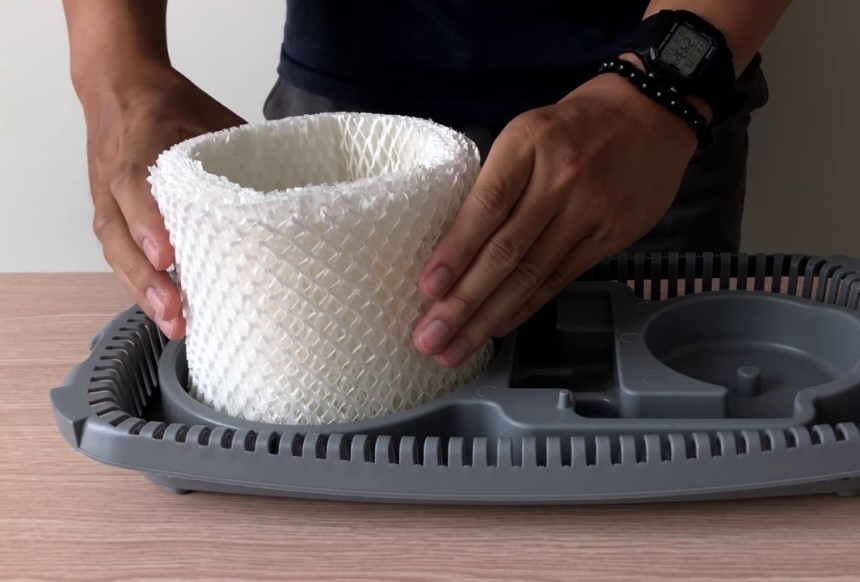 Use distilled water
Use distilled waterTap water is hard water filled with different kinds of minerals. The minerals can accelerate the growth of mold spores. Therefore, fill your humidifier’s tank with distilled water Trusted Source Distilled water - Wikipedia Distilled water is water that has been boiled into vapor and condensed back into liquid in a separate container. Impurities in the original water that do not boil below or near the boiling point of water remain in the original container. Thus, distilled water is a type of purified water. en.wikipedia.org . You can buy or easily make distilled water from home to cut costs.
Every single humidifier comes with a user manual from the manufacturer. The manufacturer offers clear guidelines on the tools required for care and maintenance and what needs to be done. You cannot do some things with some humidifiers, like adding tea tree oil or any other essential oils to the humidifier’s water.
If you use a humidifier to improve your health conditions like eczema, asthma, or dry skin caused by dry air, then you need to be careful not to make some mistakes. Otherwise, your conditions could worsen.
Keep track of the humidity levels in your home as low or high humidity can aggravate your symptoms. Ensure the humidity is below 60% during summer and around 30% in the summer.
When the humidity is too high, you will be able to tell even without using a hygrometer. Your pillows and curtains will be wet, and condensation will build up on windows and window sills. High humidity will worsen your allergies to dust mites, molds, and mildews.
If you are not using the humidifier, empty its water tank even if it’s days between uses. If you leave the water to sit in the reservoir for long, a film and stagnant surface can form on top of it, creating an ambient environment in the enclosed tank for bacteria to breed.
You can go out of your way to buy the best-rated whole house humidifier but, it will only be useful to you when it functions properly to maintain an optimum humidity in your home. Lack of proper care and maintenance increases its proneness to mold growth and other microbial development, which can harm your health. You must learn how to thoroughly clean and know what to put in a humidifier to prevent mold.
Mold is ghastly and harmful when breathed in, especially if you suffer allergies and other respiratory illnesses. Getting rid of it and preventing it from multiplying in your humidifier is pretty easy. Regular cleaning, once per week if your humidifier is large or daily if you have a small portable model, is the best way of preventing mold. Also, you can use additives like essential oils, cleaning tablets, and natural disinfectants. Using distilled or demineralized water and changing it often also prevents mold growth in your humidifier.
